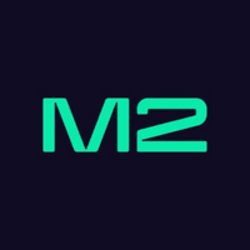/BitFlyer_Recirc-a8ee7053e3224326935ee0e1aeac0257.jpg)
Pros Explained
- No fixed per-trade fee when buying and selling cryptocurrencies: No fixed fee for simple trades, although other transactions have fees.
- Basic purchase form and advanced trading platforms available: Advanced users can upgrade to the professional-level Lightning exchange platform (additional fees apply).
- Top exchange in Japan with more than 2.5 million users worldwide: bitFlyer is the largest exchange for Japanese users and has millions of users around the globe.
Cons Explained
- Very small number of currencies supported: There aren’t many available digital currencies to buy, sell, and trade, with few cross-cryptocurrency pairs; coin availability depends on your country of residence. U.S. users can trade five different currencies on the platform.
- Not a top-10 global exchange, which can lead to lower liquidity: bitFlyer has much lower trading volumes than the leading exchanges; this could make it a bit more difficult to execute trades.
- Baked-in spread pricing of up to 6%: Spreads of 0.1% to 6.0% are included in displayed purchase and sale prices, so transactions are not truly fee-free.
Introduction
bitFlyer is a cryptocurrency exchange based in Japan. While it only supports a small number of digital currencies, the pricing model and features make it a good choice for newer cryptocurrency users. It also has a high-end active trading platform for professionals, with a different pricing model.
In addition to an easy-to-use platform for crypto newbies, bitFlyer offers a pricing model with no specific per-trade fees. Instead, it uses spread-based pricing, where all costs are included in the currency’s price. Here’s a closer look at how bitFlyer works so you can decide if it’s right for your needs.
Investing in cryptocurrencies, Decentralized Finance (DeFi), and other Initial Coin Offerings (ICOs) is highly risky and speculative, and the markets can be extremely volatile. Consult with a qualified professional before making any financial decisions. This article is not a recommendation by Investopedia or the writer to invest in cryptocurrencies nor can the accuracy or timeliness of the information be guaranteed.
Company Overview
bitFlyer was founded in Japan in 2014. While it doesn’t have many currencies on its list, it claims to be the biggest exchange in the world for Bitcoin by volume. It owns a U.S. subsidiary based in San Francisco called bitFlyer USA.
The primary platform is best for new to intermediate cryptocurrency users looking to get away from high fees per trade, which can lead to savings in some cases for smaller-sized orders. For businesses and experts, Lightning operates as a separate exchange for users with a qualifying account level.
Cryptocurrencies Available on bitFlyer
One of the most significant downsides of bitFlyer is a limited number of cryptocurrencies. Here’s what you can buy and trade on the platform if you live in the United States:
- Bitcoin (BTC)
- Ethereum (ETH)
- Ethereum Classic (ETC)
- Litecoin (LTC)
- Bitcoin Cash (BCH)
If you’re in the European Union (EU) or European Economic Area (EEA), you can also trade Lisk (LSK) and MonaCoin (MONA). Japanese users have access to several more currencies.
Trading Experience
When using the basic bitFlyer mobile app and website, buying and selling cryptocurrency is as easy as buying and selling stock. If you’ve ever managed a stock brokerage account, you should find bitFlyer easy to navigate and use.
The dashboard enables you to quickly view balances, enter trades, and update your account. There’s a dedicated area for Bitcoin separate from other cryptocurrencies, which are known as altcoins.
bitFlyer Lightning Exchange
If you’ve gone through the user verification process to the “Trade” account level, you’ve unlocked the bitFlyer Lightning exchange. Similar to active trading platforms at other cryptocurrency brokerages, Lightning operates independently of the main platform and uses a different pricing model.
However, for experienced and active traders, Lightning offers a superior feature set, including active trading charts, an open order book, recent trade listings, and a quick order entry form. Lightning includes sound effects you may find fun (or mildly annoying).
While bitFlyer may say trades are “Free,” there are included costs of up to 6% when buying or selling.
Fees
| Payment Method | bitFlyer Fee (Basic) | bitFlyer Fee (Lightning) |
|---|---|---|
| Bank Account | Free + spread (0.10%–6.0%) | 0.03%–0.10% |
| USD Wallet Fund | Free + spread (0.10%–6.0%) | 0.03%–0.10% |
| Debit/Credit Card | Free + spread (0.10%–6.0%) | 0.03%–0.10% |
| ACH Transfer | Free | Free |
| Wire Transfer | Free, or $20 for same-day funding | Free, or $20 for same-day funding |
bitFlyer uses two fee schedules for its different platforms. There are no recurring account fees regardless.
For standard cryptocurrency buy and sell transactions, bitFlyer doesn’t charge an upfront, fixed fee. However, you will have to pay 0.10% to 6.0% in spread pricing fees. In the event of low liquidity or sudden market changes, the fee can go higher. Be careful of exchange rates, as the cryptocurrency you buy isn’t really free of fees.
On the Lightning platform, fees are 0.10% for up to $50,000 in monthly trading volume. High-volume traders can see fees go down to as low as 0.03%. For active trading platforms, these fees are very competitive.
If you choose to withdraw cryptocurrency to an external platform or wallet, fees also apply. ACH transfers and wire deposits are free. Wire withdrawals cost $20 if you want same-day funding.
Security
bitFlyer has a good reputation for security and doesn’t have a history of any major hacks or breaches. It relies on a combination of technologies to keep accounts and cryptocurrency safe.
For users, it’s always essential to use unique passwords on every site, particularly ones that hold your money or other financial assets. bitFlyer requires user passwords to be at least nine characters long, meeting complexity requirements. It offers two-factor authentication and an automatic account lockout and timeout feature. Verification is required for specific account uses and transactions.
Overall, you should feel safe with an account at bitFlyer if you’re following online security best practices.
Opening a bitFlyer Account
Creating an account at bitFlyer is quick and easy if you have all your information handy. You only need your email address to start the account creation process. Once you’ve confirmed your email, set a password, and agreed to account terms, you are up and running with a “Standby Class” account.
You have to go through know your customer (KYC) verification for full account access. Upgrading to “Trade Class” unlocks up to $50,000 per day in trades and up to $50,000 per day in withdrawals. Higher limits require upgrading to the “Trade Pro Class.” Complete KYC verification requires uploading a photo ID, selfie, bank account statement, and Social Security number.
Customer Service
Customer support options are limited to a help page and email ticket system. There are no options to reach anyone by phone or live chat.
Customer Satisfaction
bitFlyer users have not widely reviewed the company’s customer service on third-party sites, but the limited data indicate poor customer support, although this is fairly typical among cryptocurrency exchanges. Like with most companies in this industry, you should consider accounts primarily self-service.
Account Management
Accounts are managed through the bitFlyer website and mobile app. These platforms include making deposits and withdrawals, updating your contact information, upgrading your account level, and managing other account needs.
The online and mobile platforms are easy to navigate and use, even for cryptocurrency beginners.
How bitFlyer Compares to Other Cryptocurrency Companies
Compared to other top-20 cryptocurrency exchanges on CoinMarketCap, bitFlyer comes with a relatively short list of currencies and pricing that can be better or worse than competitors depending on market conditions. Here’s a closer look comparing bitFlyer to larger exchange Coinbase.
bitFlyer vs. Coinbase
bitFlyer and Coinbase both offer user-friendly platforms to easily buy cryptocurrency, along with professional, active trading platforms for more experienced users. Here’s a head-to-head comparison of critical features:
bitFlyer:
- Founded in 2014
- Features 5–14 currencies, depending on the region
- Fee-free plus a spread of 0.1% to 6.0% on the basic platform
- 0.10% or less fee on the active platform
Coinbase:
- Founded in 2012
- Features 158 currencies
- $0.99 fee plus a spread of about 0.5% on the basic platform
- 0.50% or less fee on the active platform
If you’re looking to stay with the most popular currencies, bitFlyer has you well covered. But when you’re getting out into the world of altcoins, bitFlyer’s menu is limiting.
Read our full review of Coinbase here.
Final Verdict
If you’re new to cryptocurrency and want to get started with a platform that’s easy to use and doesn’t charge an arm and a leg if you want to trade in smaller amounts, bitFlyer is a great choice. Crypto newbies can start an account with ease, and rely on bitFlyer’s user-friendly mobile app for effortless trades.
On the other hand, spread-based pricing and a limited list of supported cryptos could have you looking elsewhere for your cryptocurrency trading needs, especially if you like to trade altcoins. While bitFlyer does offer an advanced platform for more experienced traders, it best serves those just getting started with cryptocurrencies.
Methodology
Investopedia is dedicated to helping those interested in cryptocurrency investing make informed and safe decisions. We are committed to providing our readers with unbiased reviews of the top cryptocurrency exchanges for investors of all levels.
Exchanges are only considered for review if they are safe, secure, liquid, and either regulated by a proper agency or entirely decentralized.














































































Be the first to comment